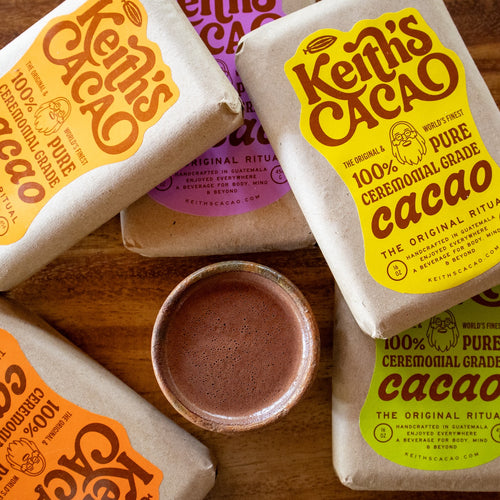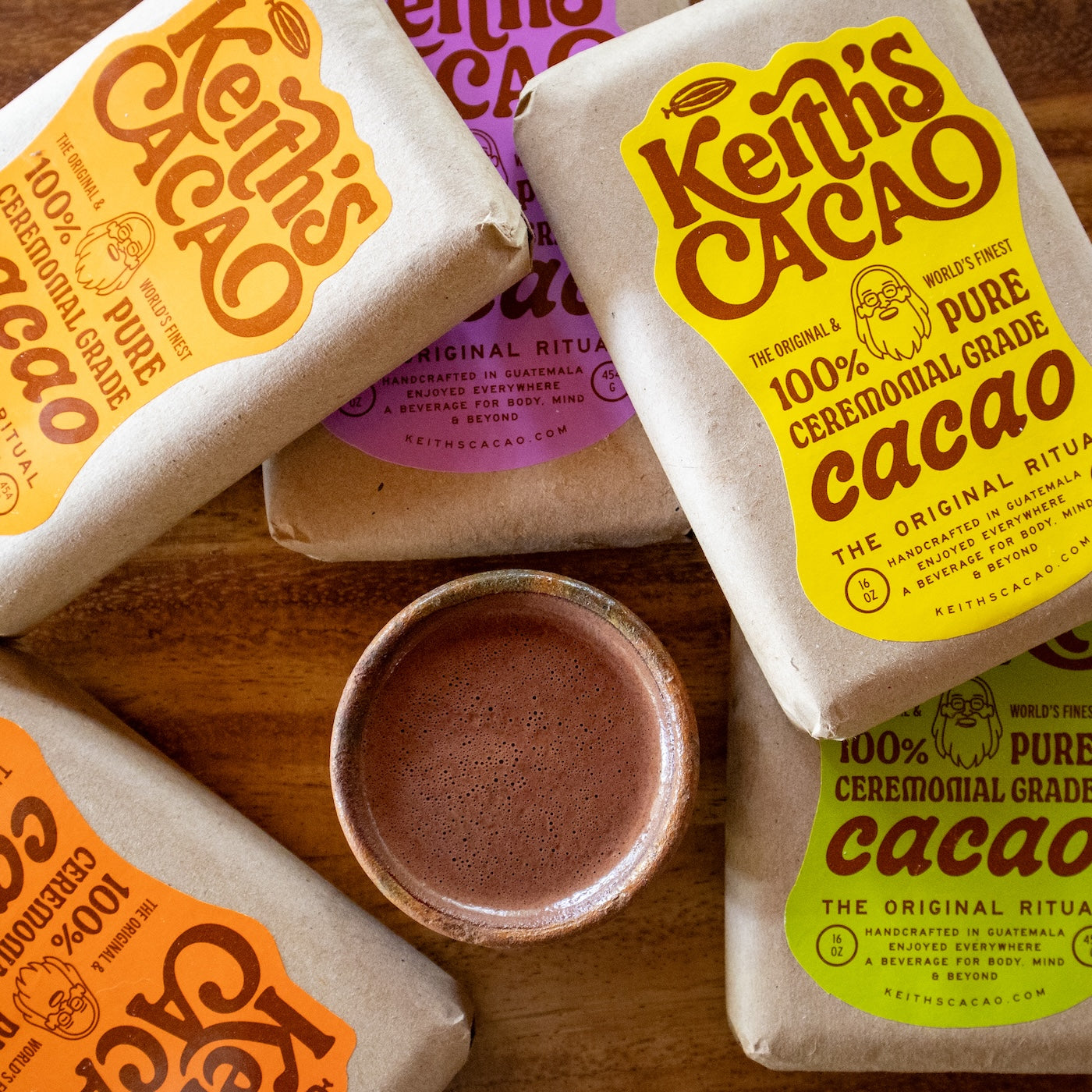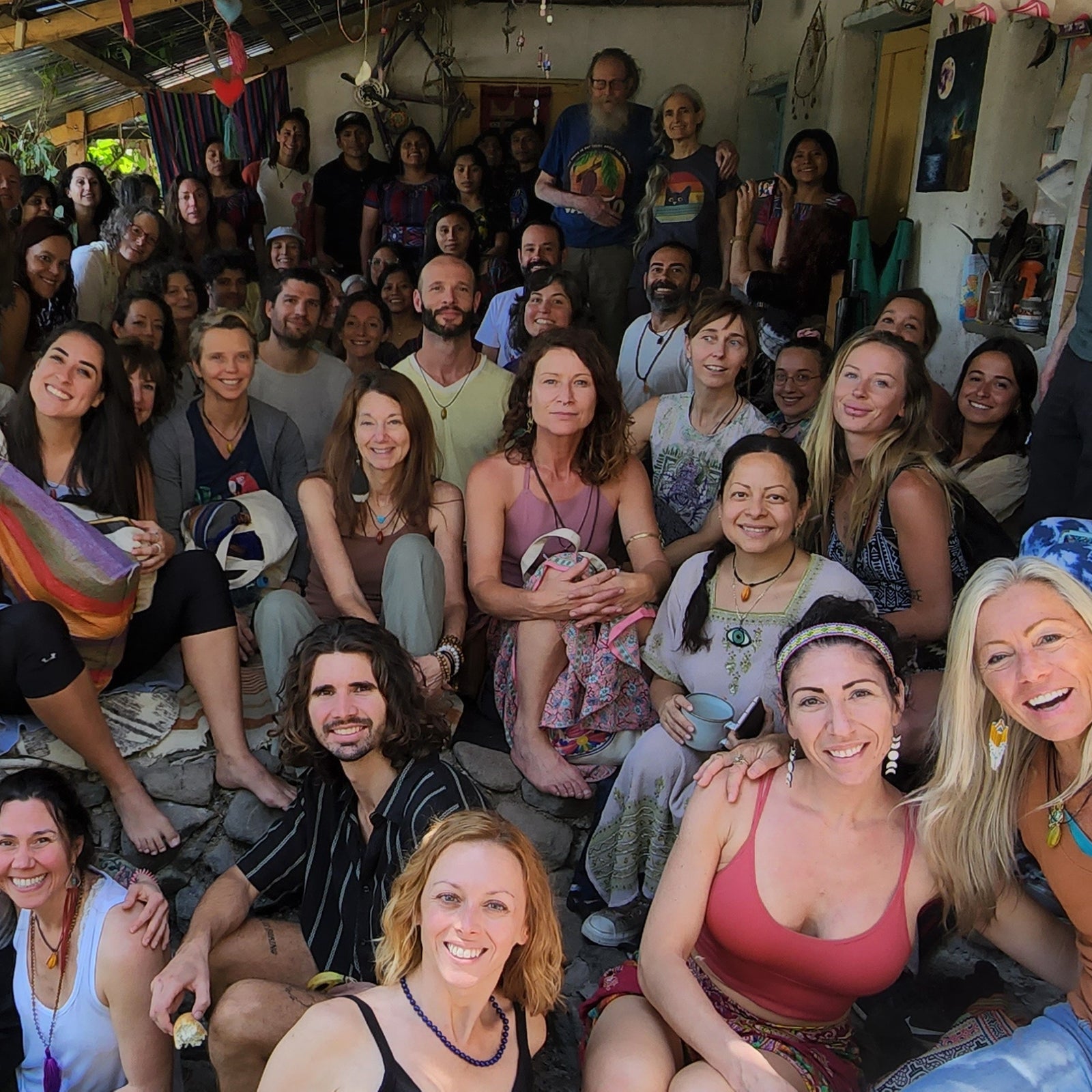Cacao beans | Cacao benefits | Cacao nutrition | Ceremonial cacao
Ceremonial Cacao vs. Cocoa Powder - What’s the Difference and Why it Matters
Have you ever wondered about the difference between Ceremonial Cacao and Cocoa powder?
As the incredible nutritional benefits of Ceremonial Cacao are becoming widely known, more and more cheap, knock-off, ultra-processed cocoa versions are popping up in health food stores and coffee shops around the world. To make matters worse, these manufacturers, chocolatiers, and many 'experts' use the words 'cacao' and 'cocoa' interchangeably. It's easy to get confused about what's actually the good stuff!
We've put together a comprehensive comparison, outlining all the steps from sourcing to end product that make the difference between Cacao and Cocoa more than simple semantics. And why your superfood smoothie or favorite chocolate bar won't give you the same blast of unique nutritional compounds and blissful euphoria as a cup of 100% Pure, Ceremonial Cacao!
Cacao vs. Cocoa: First Definitions
The word “Cacao” refers to the unrefined bean that is harvested from the fruit of the Theobroma Cacao tree, which grows in tropical climates around the world, most commonly in Mesoamerica, Africa, and Indonesia. [1] In layman's terms, Cacao is unsweetened and minimally processed, less refined, non-industrialized "chocolate".
Health and nutrition experts agree that Cacao is an incredible superfood. One of the most nutrient-dense and highly complex foods, Cacao has more compounds than almost any other food on the planet (including loads of magnesium, antioxidants, flavanols, vitamins, minerals, as well as the miraculous neurochemicals phenylethylamine and anandamide). You can read more about the nutritional makeup and health benefits of Cacao in our blogposts Cacao Benefits: 5 Reasons to Start Drinking Ceremonial Cacao and Why Drink Coffee, When You Can Drink Cacao!
The word “Cocoa” describes the product that results once the beans have been through considerable processing, which changes their molecular structure, vastly reducing their nutritional value. [2]
Ultimately, understanding the difference between Cacao and Cocoa comes from understanding the chocolate-making process. Here’s a closer look at how it works.
Cacao vs. Cocoa - Understanding the Chocolate-Making Process
Cacao was first brought to Europe by the Spanish conquistadores in the 1600s. As the drink was far too bitter for European tastes at the time, the first thing they did was to sweeten it with cane sugar.
As the drink gained in popularity, the industrial chocolate-making process evolved, during which major chemical reactions occur that are largely responsible for the flavor of chocolate as we know it today. [3] Chocolate is now hugely popular all over the world, ranking as one of the favorite flavors in North America and Europe. [4]
Whilst these modifications to the original Cacao pleased the palate, they also erased most of its nutritional and health benefits.

From Bean to Paste
Although the creation of Cacao paste, cocoa powder, and chocolate all begins in the same way, the process of turning Cacao beans into 100% Ceremonial Cacao paste maintains the benefits of the Cacao fruit in its purest form. Ceremonial Cacao paste is left as a whole food, with nothing added or removed. The process of creating Cacao paste includes:
Harvesting - When ripe, the pods are thoughtfully harvested, cracked open, and the beans are removed and set out to ferment. At Keith’s Cacao, we source only the highest quality “Criollo” beans from the local trees in Guatemala.
Fermentation - This essential step is where the beans begin to lose some of their bitterness and develop the taste and aroma of chocolate. This process can range from a few days to a week, depending on the variety of the Cacao bean.
Drying - After the fermentation process is complete, the beans are dried to remove their moisture content.
Roasting - The roasting process varies greatly across manufacturers. At Keith’s Cacao, the beans are lightly roasted with love by the local women in San Marcos La Laguna, Guatemala. Heavy roasting makes the next step easier as it can be accomplished by machine. However, this also destroys many of the active components of the cacao beans.
Winnowing - This is the process of peeling the beans and removing the outer shell. Most manufacturers will use machines for this process. At Keith’s Cacao, each and every bean is hand peeled. This is a labor-intensive, time-consuming process, but it ensures that unwanted mold or insects are removed.
Grinding - After the beans have been roasted and peeled, they are ground into a paste called chocolate liquor. In the creation of Ceremonial Cacao paste, this is the final step. From here, Keith’s Cacao is portioned into blocks, blessed by Keith and Barbara, and sent out into the world for you to enjoy!
The Process of Creating Cocoa Powder and Industrial Chocolate
Creating commercial cocoa powder and chocolate products that are primarily designed to please the palate is a much longer process, and the outcome is a largely modified and manipulated version of the Cacao bean. Each manufacturer will have their own unique recipe and process, depending on the type of chocolate they are making and the flavor they’re trying to create, but here are some of the most common steps:
Pressing - After grinding, Cacao liquor is heated and placed under pressure to remove the Cacao butter. This process removes the healthy fat from the Cacao, which is often over half of the bean’s volume. The butter is often sold to pharmaceutical and cosmetic companies, and the remaining product is no longer a whole food.
Dutching - After the Cacao butter is removed, the Cacao is “dutched” or alkalized, combining it with sugar and changing the pH levels to neutralize acidity, reduce bitterness, and produce stronger flavors.
Refining - After sugar and flavors have been added to enhance the taste, there is further refinement to reduce particle size and make the chocolate smoother.
Conching - In the conching process, the chocolate is kneaded for up to seven days to completely mix the ingredients and make it even smoother. Sometimes more ingredients are added in this step, depending on the desired flavor and final product.
Tempering - This process heats and cools the chocolate to create the perfect texture and consistency.
Molding and Packaging - This final step allows the chocolate to cool and harden into different molds, before it is wrapped and shipped around the world!
Ceremonial Cacao vs. Cocoa Powder - Ingredients and Nutritional Value
As you can see, cocoa powder is a significantly different product than Ceremonial Cacao paste! After undergoing intense, industrial-scale processing, cocoa powder no longer contains the same ingredients or nutritional value as Cacao in its pure form. Processing removes many of the naturally occurring minerals, antioxidants, and flavanols from the Cacao beans. On top of this, cocoa powder is mostly stripped of its powerful active compounds like anandamide and phenylethylamine (the ‘bliss molecule’ and the ‘love chemical’).
Scientific testing shows that cocoa powder is devoid of many of the nutritional benefits of pure, Ceremonial Cacao paste [5]. As most nutrients are lost through roasting at high temperatures and being treated in high-pressure environments, Cocoa powder is no longer a whole food. Without the Cacao butter acting as a carrier fat, your ability to absorb any remaining vitamins, antioxidants, and nutrients is significantly reduced.
Removing the healthy carrier fats from Cacao also interferes with your ability to experience the gentle, uplifting effects of theobromine, Cacao’s unique cardiovascular stimulant. Consuming the powder, separate from the fat, can be overstimulating to your nervous system and taxing on your liver and digestive tract.
Ceremonial Cacao vs. Cocoa Powder - Making an Informed Choice
Theobroma Cacao, by nature, has been consumed as a whole food for centuries, and in its finest form, is loaded with nutritional benefits for your body, your mind, your heart, and your soul. Left unmodified and consumed in its purest form, Ceremonial Cacao has the potential to boost your body’s health, clear your mind, elevate your mood, and support inner growth with its plant medicine properties.
When Cacao beans undergo intense processing, they change form, losing much of their magic and medicinal qualities. Not only are essential items removed, but sugars, alternative fats, and flavors are also added. If you are buying cocoa powder, you are most likely buying the defatted, nutrient and energy devoid version of this potentially powerful superfood.
If you’re confused by labels and marketing, or the interchangeable use of the words Cacao and Cocoa - check the labels every time you buy. Look for an indication that it has not been processed or pressed, and check the fat content. If the Cacao butter hasn’t been removed, the fat should make up more than 50% of the product by weight. Of course, the best way to know is to buy from a source you know and trust. We’re always happy to answer any questions you may have and to provide you with 100% Pure, Ceremonial Grade Cacao!
Read more about how Keith's 100% Pure Ceremonial Cacao is sourced and produced here.
[1] Cocoa Production in a Nutshell. Make Chocolate Fair.
[3] https://www.ncbi.nlm.nih.gov/pmc/articles/PMC6749277/
[4] https://www.sfu.ca/geog351fall03/groups-webpages/gp8/prod/prod.html
[5] Keith Cacao “Power of Cacao” course
References
https://www.forbes.com/health/body/cacao-vs-cocoa/
https://www.qualitylogoproducts.com/blog/how-is-chocolate-made/
https://www.healthline.com/nutrition/cacao-vs-cocoa#process
https://www.qualitylogoproducts.com/blog/how-is-chocolate-made/

